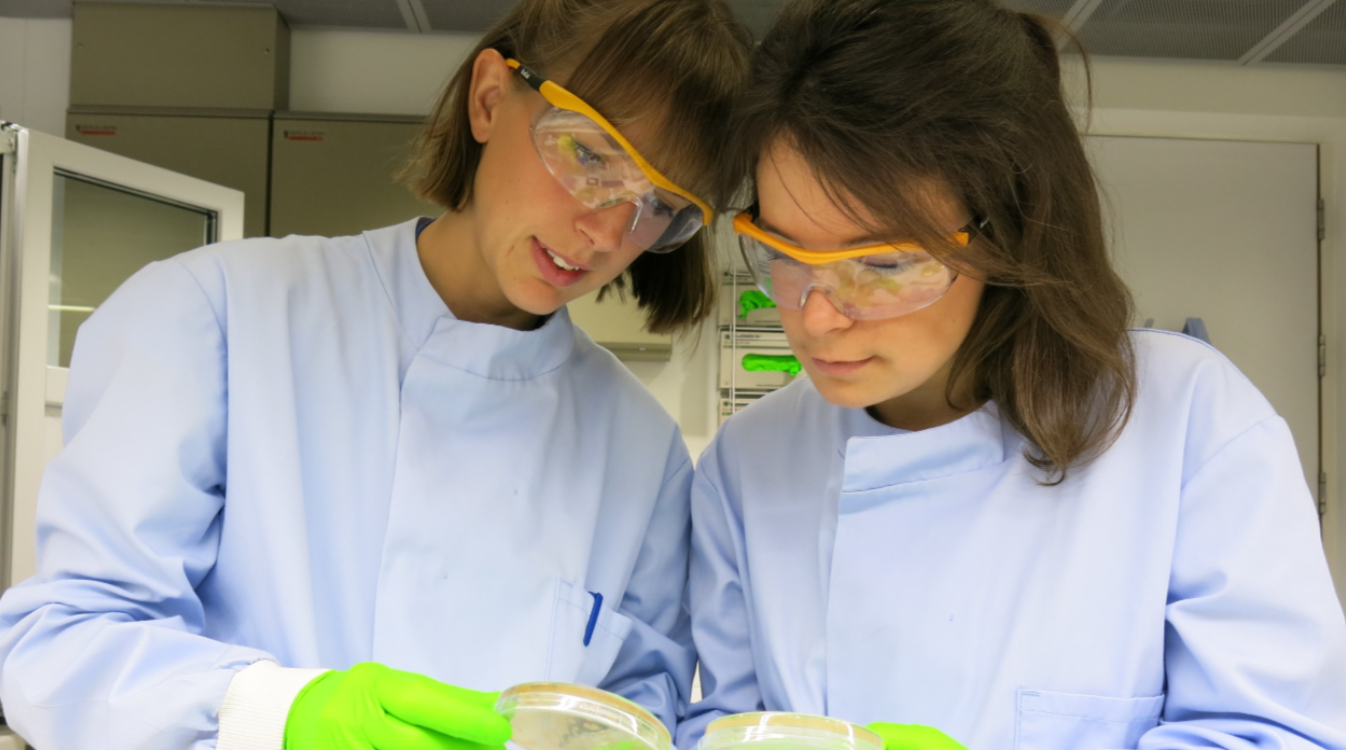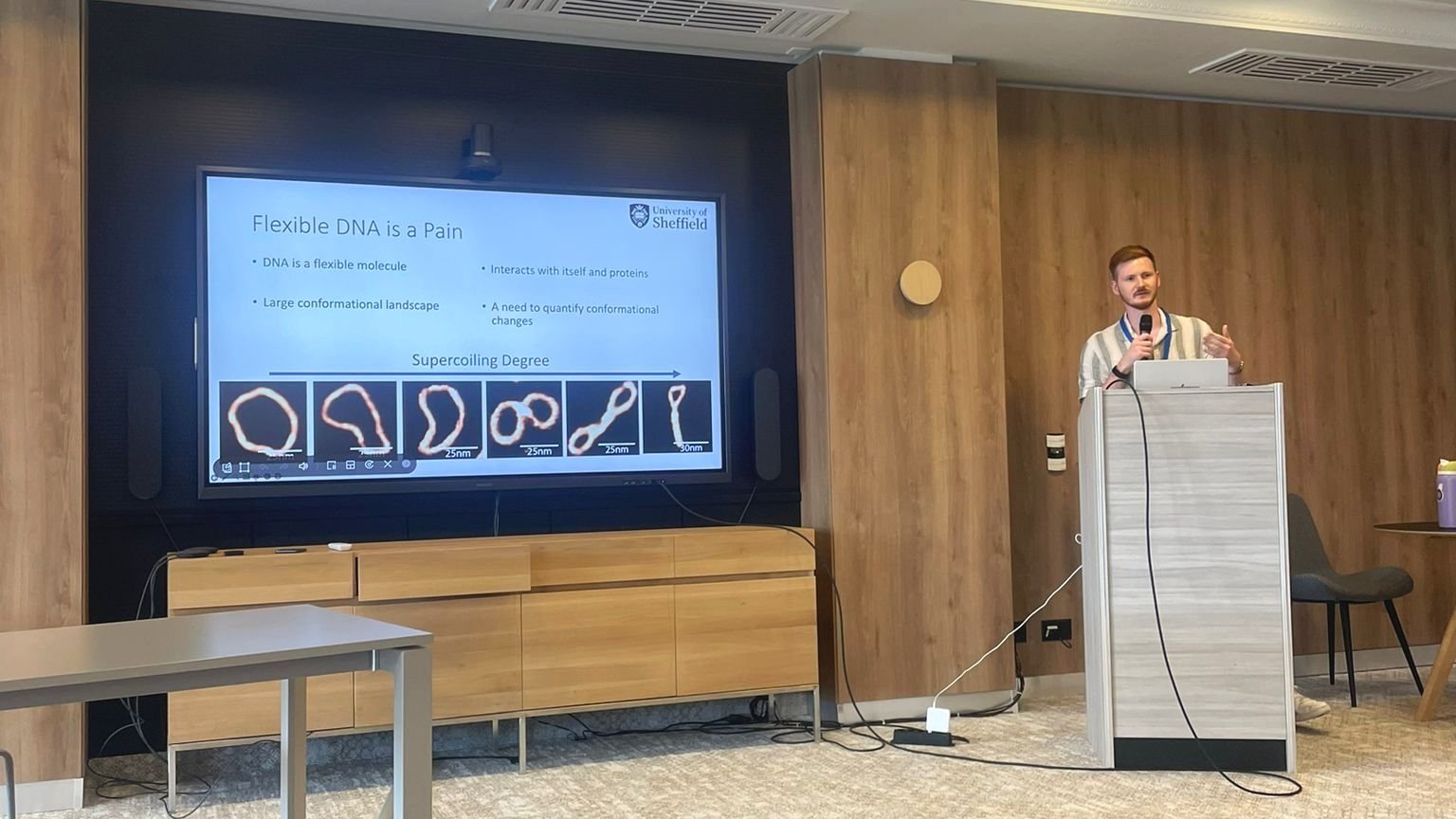Great to catch up with you again Eddie! Can you tell us a bit about your PhD?
Sure. I’m trying to understand how small-scale changes in the structure of DNA affects how it interacts with proteins.
These interactions are biologically essential for all forms of life so are important targets for antibiotic and anti-cancer drugs. Understanding how they work could help develop and improve treatments for a wide range of diseases.
AFM is an essential tool to help understand these interactions since it allows us to see individual molecules of DNA and structural changes such as bends and twists as well as directly visualizing the DNA and protein binding.
In what way are you using AFM? To what extent did your background of working with NuNano help at all?
AFM is a large part of my PhD. I use AFM to image individual molecules of DNA as well as their interactions with proteins. I take advantage of AFMs ability to operate in liquid to get high resolution images of these interactions in a near native state which allows me to see how the local shape of the DNA is affected.
Working with NuNano was a huge help when I started doing AFM as I’d already learnt a lot about the technique from the NuNano team, as well as through discussions with customers about their work in a wide variety of fields.
Additionally, as the probe is such an core part of the microscope, having a good grasp of the different aspects of probe design made a big difference not only in understanding probe choice in my own lab but also in evaluating AFM experiments in the literature.
What was it like moving from working with NuNano to working back in academia again?
Doing a PhD is a long game, the deadline is 4 years away at the start, so you have to create your own structure and your own intermediate targets.
While at NuNano I had a constant stream of calls and meetings with customers on top of the regular meetings and deadlines that come with being part of a growing company. This was probably the biggest adjustment.
Whilst I’ve enjoyed the freedom and space to do research and learn I do sometimes miss the faster-paced world of commerce and chasing sales!
How was it moving to a new area and starting a new job whilst we were still very much in the full throes of the Covid pandemic last autumn?
Moving during a pandemic was pretty difficult. Not only the practical side of it was hard but it’s taken a while to get to know the city and people in it. Thankfully Sheffield is a very green city with easy access to the Peak District so I manged to discover a lot of lovely parks and explore the Peaks on my bike.
The PhD itself also didn’t start as I had imagined as I wasn’t able to get into the lab for four months - though that did give me a lot of time to read and attend the glut of virtual conferences going on at the time.
Although it was a bit frustrating at the time it meant that when I did get into the lab I had a lot better idea of what I was doing and was able to hit the ground running and get some good data, so it worked out well really.
As an insider to academia now, what are your thoughts on the need and value of an AFM Community?
AFM is a powerful technique with potential applications in numerous areas from nanotechnology to diagnostics. This breadth of application has the potential to fragment the field so having a strong and generous AFM community is essential.
Sharing developments and best practice between people and labs working in different areas through such a community is one way to ensure that all forms and applications of the technique can benefit from these improvements.
I believe an AFM community that involves the commercial instrument and probe manufacturers is key to seeing the applications developed in academic labs applied more broadly in non-specialist setting like the clinic.
What’s brilliant is that since starting my PhD I’ve seen the AFM community come together around the question on data analysis and seen projects emerge to share software between groups (see www.github.com/AFM-SPM). I can see this being a particular area of collaboration allowing progress like we’ve seen in the cryo-EM field.
What has been the biggest lesson for you in the past year?
I think one of the biggest lessons I’ve learnt this year is that doing AFM provides fantastic opportunities to collaborate with a variety of researchers.
Being able to directly view nano-scale structures can clarify mechanisms that otherwise can only be visualised abstractly as cartoons so combining AFM with other approaches can reveal things invisible to each technique in isolation.
This is true of all scientific instruments and methods however AFM’s fairly unique set of advantages and disadvantages makes it a particularly helpful partner for illuminating processes at the nanoscale.







































